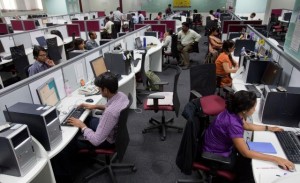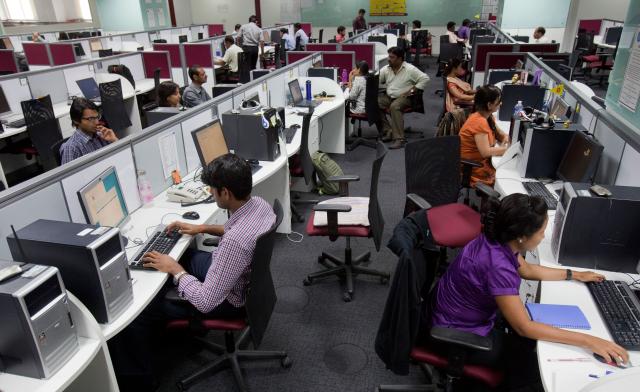 The IT/ITeS sector has clearly been driving corporate real estate in the country; and consequently, much of the development in this space is being propelled by IT and back-office demand for workspaces, as per CBRE’s India report – Real Estate & Workplace Strategies of Shared Services Occupiers.
The IT/ITeS sector has clearly been driving corporate real estate in the country; and consequently, much of the development in this space is being propelled by IT and back-office demand for workspaces, as per CBRE’s India report – Real Estate & Workplace Strategies of Shared Services Occupiers.
The report focuses on the remarkable growth of the outsourcing and technology industry over the last two decades; and how the sector has been implementing strategies for managing their real estate portfolios.
India’s status as a global outsourcing hub is also reflected by the fact that approximately 90% of total office space occupied in 2014 and during the first nine months of 2015 was for either back-offices or a combination of back and front-office operations of companies.
As shared services occupiers respond to the forces of globalization amid a backdrop of economic uncertainty and focus on cost optimization, their real estate portfolio strategies have varied.
Anshuman Magazine, Chairman & MD, CBRE South Asia said, “For most global corporate office occupiers setting up a shared services platform in the country, space take up strategies are tied with their overall corporate strategies. As such, parameters like space utilization, efficiency and productivity play a large role in revising real estate strategies. Going forward I believe that these larger aspects will dictate how global corporates expand their offices across key cities in the country.”
“While India remains the preferred destination for outsourcing, corporate occupiers have been growing in suburban and peripheral locations in the major Tier I cities. The emphasis on quality infrastructure, mass transit and rentals continues to play a key role in decision making,” said Ram Chandnani, Managing Director, Transaction Services, CBRE South Asia Pvt. Ltd.
Organizations are now under enormous pressure to drive down costs by increasing their workplace ‘static density’—the space per sq. ft. per workstation. Benchmarking metrics such as workplace density and space utilization are becoming more critical in helping corporate occupiers make informed workplace and real estate decisions, and manage their real estate as a strategic asset; however, this needs to be approached in the right way.
Focus on workspace density
Workspace density can be broadly classified into ‘static’ or ‘dynamic’ types. In a static density model, employees are assigned a fixed workspace as a primary work station. The dynamic density model allows staff to work flexibly by choosing different places to work around the office.
Static density across companies is based on factors such as the location of the office (e.g., whether an office is in a core or suburban area), size of operations, the use of space as reward (e.g., senior staff are often allocated larger spaces), whether it is a private or public sector company, and the nature of work (e.g., employees in the financial sector often have specialized spaces and work desks).
Space and Technology: Workspaces are getting smaller, and documentation is increasingly moving online, limiting storage needs. While the increased focus on effective space utilization has given birth to the concept of workplace strategy, technology is playing a pivotal role in successful implementation.
Space Utilization: Workplace strategy involves creating a healthy relationship between technology, space and people. However, space utilization has the most significant impact on commercial real estate dynamics. Firms have to accommodate growing headcounts amid a steady increase in real estate costs, which is a challenge in the cost-sensitive and high-headcount outsourcing industry.
Emerging workplace trends in India
Office space design has gradually moved from a rigid floor plan to one facilitating an open plan seating arrangement. Over the past decade or so, the share of cubicle spaces in the overall floor plan of a typical office has fallen from 23–25% to just 5% today. On the other hand, open plan seating, which comprised around 25% of the floor plan in the past, has increased to 45–50% today.
The share of open floor seating arrangements often varies across different floor plate sizes. For larger office spaces, companies have the flexibility to further increase the size of the area allocated to open plan seating while doing away with corner offices and limiting the space allocated for meeting rooms and circulation
“Corporate occupiers must develop a complete understanding of how their people work, and what their organizational objectives and imperatives are. It is only by aligning these two fundamental perspectives that companies can implement a workplace strategy capable of achieving cost effective business transformation,” Magazine added.





